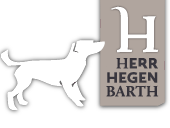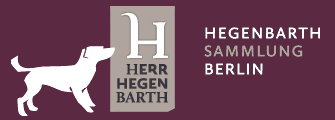
left: Josef Hegenbarth, Der Affe als Mensch (detail), ca. 1940, brush drawing
right: Wolf Suschitzky, Guy the Gorilla, London Zoo (detail), 1958, photography*
Looking at Animals Looking at Us
08. July — 10. October 2015
Location:
Hegenbarth Sammlung Berlin
Nuernberger Strasse 49
10789 Berlin
Theme show
Opening: Wednesday, 8 July, 19:00—21:00
Childrens' opening: Sunday, 12 July, 12:00—14:00
Summer vacation: 27 July — 10 August
The second exhibition at Hegenbarth Sammlung Berlin “Looking at Animals Looking at Us”, which will run alongside the major themed exhibition “Gone to the Dogs!” at Kupferstichkabinett Berlin, will provide insights into the interdependent relationship between humans and animals. We will be looking at man’s view of animals and at how the creature returns our gaze. Contributions by over thirty international artists – most of them contemporary – examine our eye contact with these soulful counterparts. They look at the animal as a projection surface for conscious and unconscious emotions: lust, disgust, exoticism, voyeurism and even humor. The exhibition looks at a wide range of topics in relation to these themes, including notions of the animal, the symbolic taming of wild animals, the fictionalization of rapacious beasts as ‘cute’, cult, fairytale and mythical animals in literature, the keeping of animals in zoos and cages, and even at forms of presenting dead animals, such as in the shape of trophies in museums or public collections. The cabinet exhibition will commence with Josef Hegenbarth and some of his contemporaries and will include artistic approaches from Hegenbarth’s era until the present day. Numerous works were made specifically for the exhibition, which includes painting, drawing, graphic works, photography and sculpture.
Collection artist Josef Hegenbarth’s (1884–1962) oeuvre focused on animals time and again throughout his artistic career. He spent much of his time in the Dresden zoo, as well as in the circus, in parks and public spaces, where he could observe animals as animated subjects for his works. For example, we will often encounter dogs in Hegenbarth’s drawings, watching people in coffee houses or standing amidst crowds of people as though uninvolved in human affairs, the only being looking into the distance beyond the confines of the picture, while the pedestrians are involved in carrying out their transactions or engaging with other people. In the zoo his interest lay with exotic or rare animals such as the panthers, apes, hyenas, wolves and bears, which he drew with an elegant line, sometimes in fast sketches, sometimes in precise detail revealing his fondness for his subjects. But often he focused on the gaping humans instead and the animals in their cages and enclosures fade into the background in the works.
This first thematic exhibition at Hegenbarth Sammlung Berlin will run from July 9 through the summer break until October 11, 2015. The exhibition will be accompanied by a publication with numerous colour illustrations and essays (in both German and English) by art historian Christina Katharina May, whose research at the Duchamp research center at Staatliches Museum Schwerin focuses on zoos and art in the 20th century, and John Berger, who will be featured with his reference text “Why Look at Animals?”.
Artists in the exhibition:
Thomas Baumhekel, Matthias Beckmann, Ursula Böhmer, Mark Dion, Piotr Dluzniewski, Ayşe Erkmen, Max Ernst, Elliott Erwitt, Roam Frechen, Ingeborg Gabriel, GIOM - Guillaume Bruère, Ulrich Görtz, HAP Grieshaber, Trixi Groiss, Waldemar Grzimek, Emanuel Hegenbarth, Josef Hegenbarth, Norbert Hinterberger, David Hockney, Candida Höfer, Leiko Ikemura, Sven-Åke Johansson, Karin Kneffel, Gerhard Marcks, Ewald Mataré, Nanne Meyer, Mona Mönnig, Bettina Munk, Rudolf Schlichter, Renée Sintenis, Alice Stepanek, Wolf Suschitzky, Karin Székessy, Victor Vasarely, Cornelius Völker, Stephen Wilks, Michael Wutz
* Courtesy Galerie Hilaneh von Kories, Berlin

